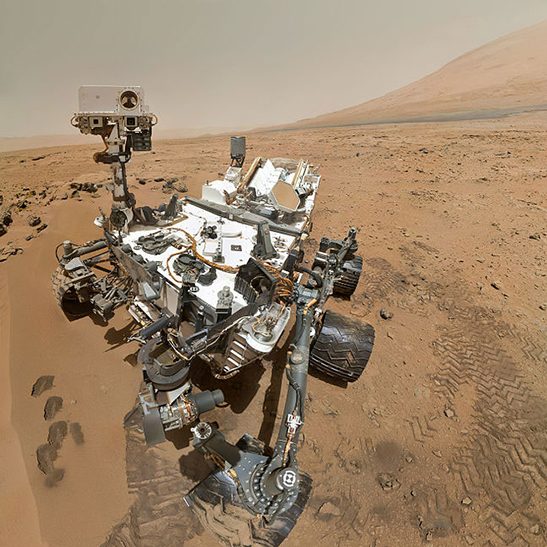Temperature ( F )°
Max Air Temp.
Min Air Temp.
Historical Data
()
Martian Orbit
A sol is a martian day and it lasts approx. 40 minutes more than a day on earth. The orbit of mars is about 1.8 times larger in its circumference than that of Earth. Therefore, it takes Mars around 668.6 sols (Approx. 668.9 Earth days) to go around the sun, thus completing a year. In the controls below, you can reset the position of the planets, and slide them forward in time to see how much longer a martian year is in proportion to a year here on Earth. You can also see how the seasons in mars change as months pass by.
Please note that the positioning of the planets are not accurate in terms of spacial location. Rather their position in orbit represents the temporal location in relation to their year.
Sols Since Rover Landing:
Years Since Rover Landing:
Solar Longitude:
Current Sol:
Month Number:
Season:
Mars Month: | Earth Month:
Mars.IO
Mars.IO is a Martian weather analytics application that pulls data transmitted by the Curiosity Rover back to Earth, and computes interactive, data-driven visualizations.
The purpose of the project is to provide an educational resource on Martian Weather, its environment, and the Curiosity Rover Mission. By gathering both the latest, and archived data available, the application can visually represent the information sent, over a 2 and a half year period, by a robot that lives 140,000,000 (that's Million) miles away, in the sloping rocky hills of Gale Crater.
Mars.IO is open source under MIT license, so go ahead, fork the project and make your own version.
Specials thanks to:
